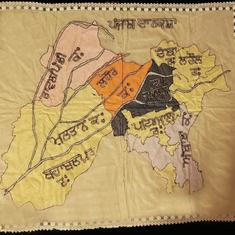The connection between numbers and mathematics on the one hand and rhythm on the other is an obvious one. From highly evolved conceptual structures like cross-rhythms and mathematically constructed rhythmic phrasing to fit into specific number of matras or time units, to more basic ideas like taals or time cycles with as many as 108 matras, indicate this link adequately.
But there is a relationship between Hindustani raag music and numbers as well. For instance, merukhand or the formulae for adding and changing the permutation and combination of swaras or notes is believed to give rise to more than 5000 patterns. Musicians also mention the existence of thousands of raags with various combinations of swaras.
Perfect example
Importantly, one of the principles for determining the validity of a raag is the use of 5, 6 or 7 swaras. In other words, a melodic structure that uses less than 5 swaras is not conventionally regarded as a raag. However, there is always an exception to any rule, and raag Malashree is a perfect example of that. It utilises three swaras – the tonic or the first, third, and fifth, clearly posing a huge challenge to the performer. Not surprisingly, this raag is rarely performed.
The single track included in this column features raag Malashree played by sarod maestro Ali Akbar Khan. He is accompanied by iconic tabla player Zakir Hussein. After a short introductory passage, he begins a vilambit gat or slow instrumental composition in Teentaal, a cycle of sixteen matras.
Despite the limited number of swaras, Ali Akbar Khan counters the constraint by employing various musical devices. The long meends or glides between swaras possible on the sarod, changing syncopation, cross-rhythms, and different octaves, are used to the fullest to create variety. The vilambit gat is followed by a drut gat or fast instrumental composition in Teentaal. Frequent rhythmic responses from Zakir Hussein carry the narrative forward.










